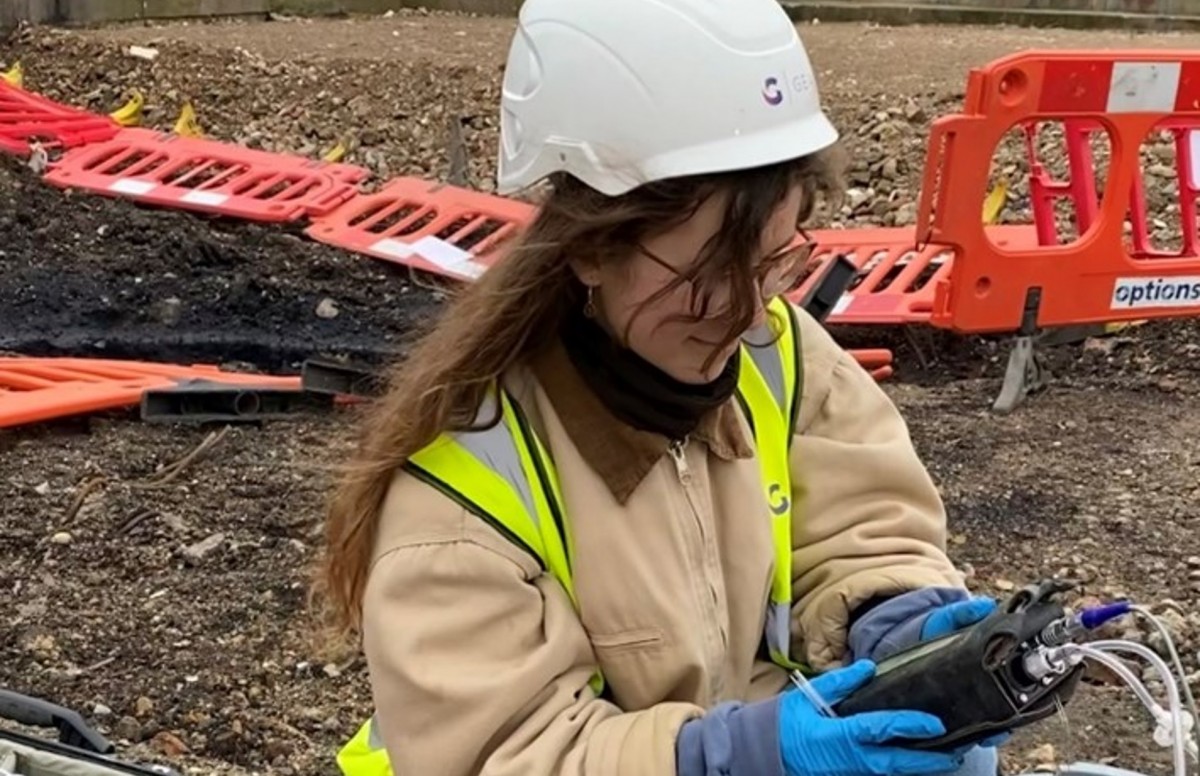Fascination About Geotheta
Wiki Article
The Main Principles Of Geotheta
Table of Contents7 Simple Techniques For GeothetaNot known Facts About Geotheta4 Easy Facts About Geotheta ShownThe Main Principles Of Geotheta Get This Report about Geotheta

They perform website investigations, gather examples, perform lab examinations, and analyze data to assess the viability of the ground for building and construction projects - Engineer of Record. Based upon their searchings for, geotechnical designers offer suggestions for structure design, incline stability, maintaining structures, and mitigation of geotechnical hazards. They collaborate with various other experts, such as architects, architectural designers, and building and construction groups, to ensure that geotechnical considerations are integrated into the total project design and execution
By analyzing the actions and residential properties of dirt and rock, they can determine prospective geotechnical dangers such as landslides, dirt negotiation, or slope instability. Their expertise aids protect against failures or mishaps that might threaten lives and residential property. Right here are some comprehensive tasks and responsibilities of a geotechnical engineer: Website Investigation: Geotechnical engineers conduct website examinations to gather information on subsurface conditions.
They analyze the data to comprehend the buildings and actions of the soil and rock, including their toughness, permeability, compaction qualities, and groundwater problems. Geotechnical Evaluation and Style: Geotechnical engineers evaluate the data accumulated throughout site examinations to examine the stability and suitability of the website for construction jobs. They do geotechnical estimations and modeling to assess elements such as bearing capability, settlement, incline security, side earth stress, and groundwater circulation.
Getting My Geotheta To Work
Structure Design: Geotechnical designers play a critical role in creating structures that can safely support the designated structure. They evaluate the soil conditions and load needs to establish the appropriate foundation kind, such as superficial foundations (e.g., grounds), deep structures (e.g (https://allmyfaves.com/geotheta?tab=Geotheta)., stacks), or specialized techniques like soil improvement. They think about elements such as settlement limits, bearing ability, and soil-structure communication to create ideal structure layoutsThey examine construction strategies, monitor website tasks, and conduct area evaluations to verify that the design suggestions are followed. If unforeseen geotechnical issues occur, they assess the scenario and give suggestions for remediation or modifications to the style. Risk Analysis and Mitigation: Geotechnical designers assess geotechnical threats and dangers associated with the project site, such as landslides, liquefaction, or dirt erosion.

Partnership and Interaction: Geotechnical designers function carefully with other experts associated with a task, such as designers, structural designers, and building and construction teams. Reliable interaction and partnership are necessary to integrate geotechnical factors to consider into the total project layout and construction process. Geotechnical designers offer technological knowledge, response inquiries, and ensure that geotechnical demands are fulfilled.
Geotheta Can Be Fun For Everyone
Here are some kinds of geotechnical engineers: get more Structure Designer: Structure designers focus on making and examining foundations for frameworks. They evaluate the dirt problems, tons requirements, and website qualities to identify the most suitable foundation type and style, such as shallow foundations, deep structures, or specialized techniques like stack structures.They review the factors affecting slope stability, such as dirt residential properties, groundwater problems, and incline geometry, and develop approaches to avoid slope failures and reduce dangers. Earthquake Engineer: Earthquake engineers specialize in analyzing and creating frameworks to stand up to seismic forces. They analyze the seismic risk of a site, evaluate dirt liquefaction possibility, and develop seismic layout requirements to make sure the security and resilience of frameworks throughout earthquakes.
They carry out field screening, gather samples, and evaluate the collected information to characterize the dirt properties, geologic developments, and groundwater problems at a site. Geotechnical Instrumentation Engineer: Geotechnical instrumentation designers concentrate on tracking and measuring the behavior of soil, rock, and frameworks. They set up and maintain instrumentation systems that keep an eye on variables such as soil settlement, groundwater degrees, incline motions, and architectural variations to evaluate performance and give very early warnings of prospective problems.
A Biased View of Geotheta
They perform tests such as triaxial tests, debt consolidation examinations, direct shear examinations, and leaks in the structure examinations to gather data for geotechnical analysis and design. Geosynthetics Designer: Geosynthetics designers concentrate on the layout and application of geosynthetic products, such as geotextiles, geogrids, and geomembranes. They use these products to boost soil stability, enhance slopes, provide water drainage services, and control erosion.They often tend to be investigative people, which suggests they're intellectual, introspective, and inquisitive. They wonder, methodical, sensible, logical, and rational. Some of them are likewise social, indicating they're kind, charitable, cooperative, individual, caring, helpful, compassionate, skillful, and pleasant. Does this seem like you? Take our free career test to discover if geotechnical designer is just one of your leading job matches.
In the office setting, geotechnical designers use specialized software program tools to execute estimations, produce styles, and examine information. They prepare reports, review project requirements, connect with customers and staff member, and coordinate project tasks. The workplace setting supplies a helpful environment for study, evaluation, and partnership with other specialists included in the project.
Everything about Geotheta
They regularly go to task sites to conduct website investigations, assess geotechnical conditions, and collect information for evaluation. These brows through involve traveling to various locations, often in remote or challenging surfaces. Geotechnical engineers might carry out dirt sampling, conduct examinations, and monitor building activities to make sure that the geotechnical facets of the project are being carried out correctly.Geotechnical designers additionally operate in specialized geotechnical labs. In these facilities, they perform experiments, perform tests on soil and rock examples, and assess the design homes of the products. Geotechnical research laboratory engineers work thoroughly in these settings, managing testing devices, running tools, and videotaping information. They team up with other laboratory staff to guarantee precise and reputable testing outcomes.
Report this wiki page